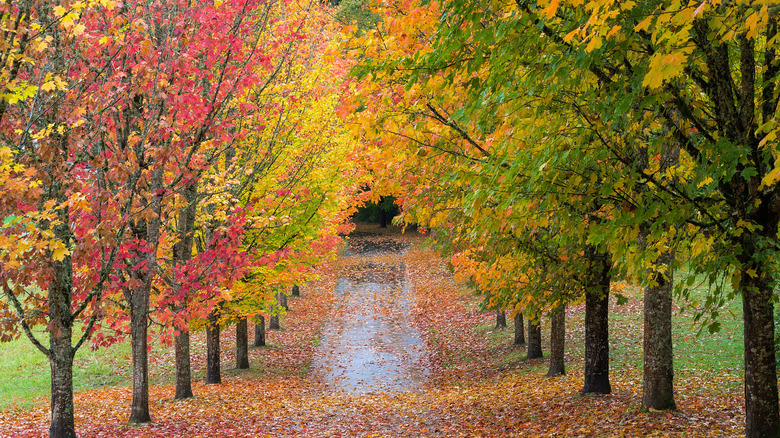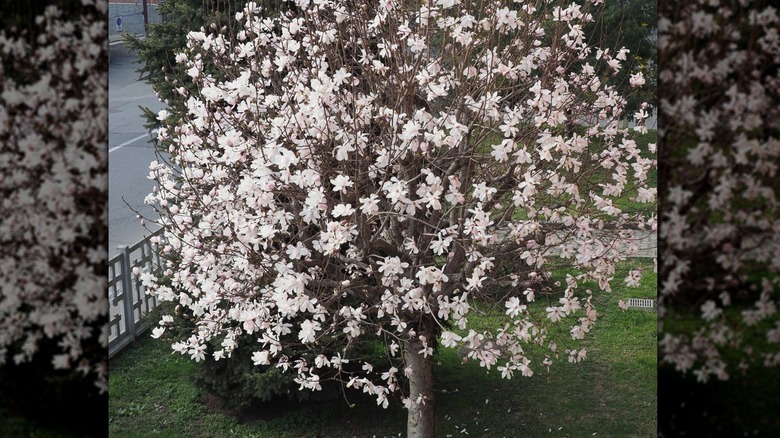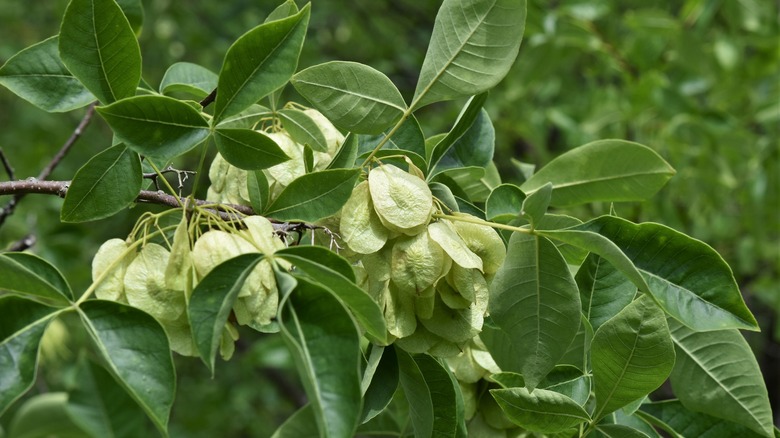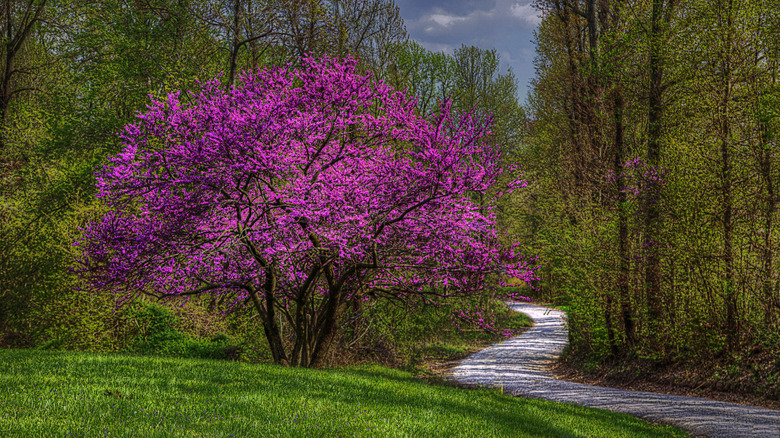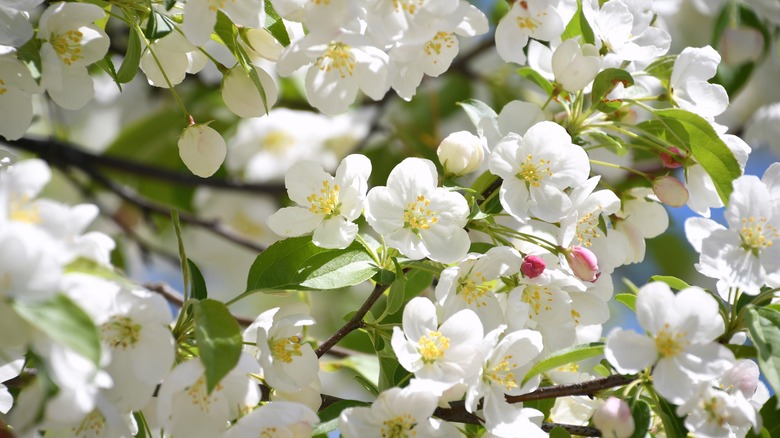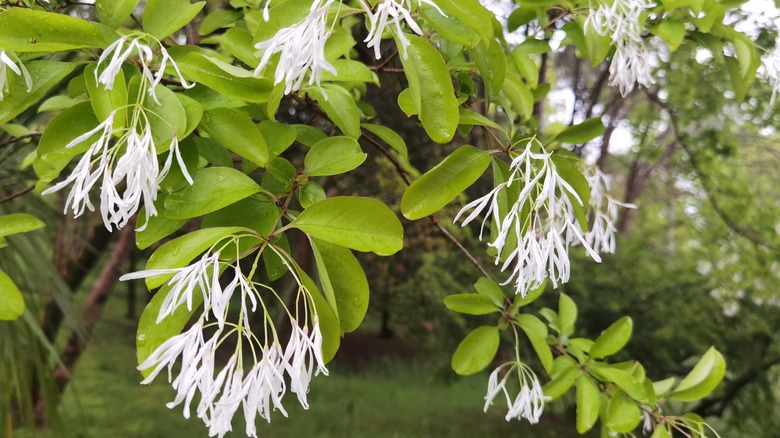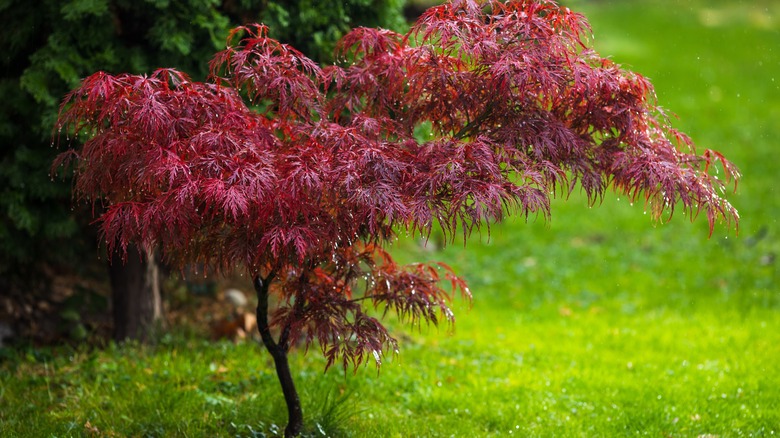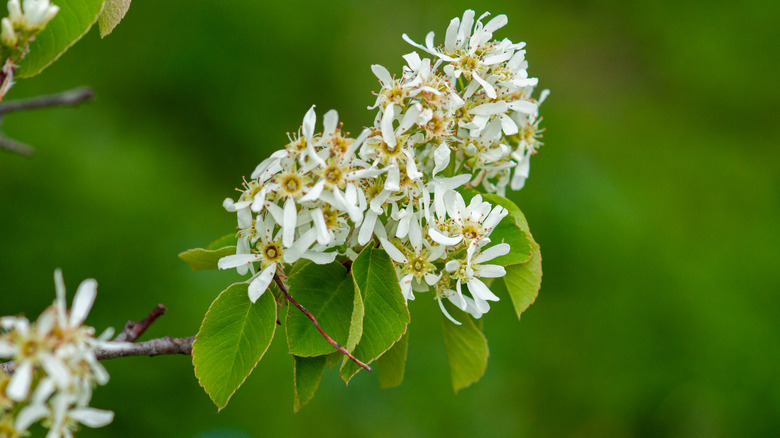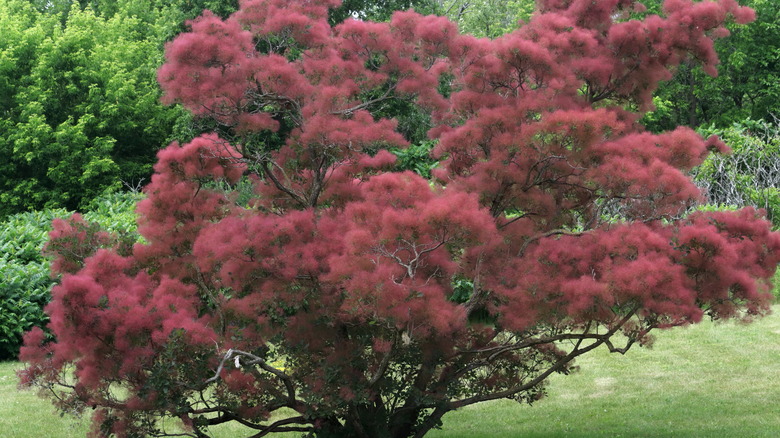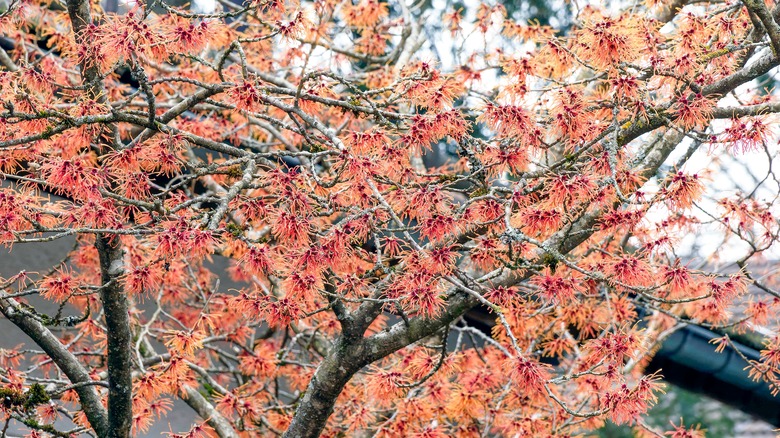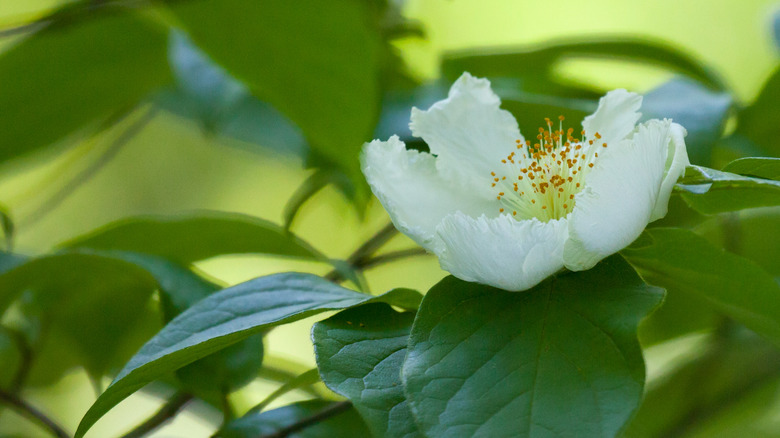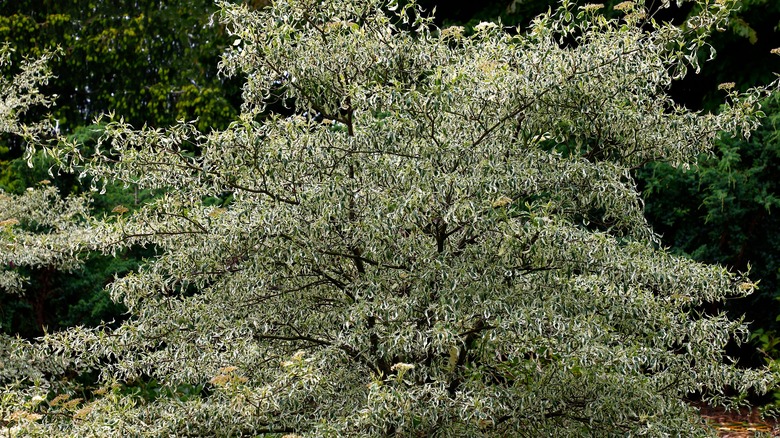11 Small Trees That Add Color To Your Landscape Without Damaging Your Home Or Driveway
We may receive a commission on purchases made from links.
Small trees are perfect for a compact garden and can add privacy, color, and vibrancy to your landscape as long as you select species without aggressive roots that might damage your home or driveway. Ideally, you want to choose varieties with a maximum height of 20 to 25 feet so that they won't interfere with overhead power lines. It's also important to consider how much sun or shade your yard gets to ensure that the trees you've selected will suit the location you've chosen for them.
For color, you might want to select either a flowering variety or a deciduous tree, like smoke trees or Japanese maples, that will brighten your garden with glorious vibrant foliage in the fall. Other things to think about are whether you want to screen off an undesirable view or if you want to shade some of your windows to keep your house cooler in the warmer months. You may even like to ponder if this shade is desirable only in the summer because you'd like more sunshine floating into your windows in winter. In this instance, a deciduous tree like a crabapple is a great choice. Lastly, it's a good idea to steer away from invasive species or those that will create too much mess on your driveway. All the species in this list are relatively small, will add color to your yard, and have non-damaging roots.
Sweet Bay Magnolia
The sweet bay magnolia (Magnolia virginiana) is native to parts of the United States. It can be grown in USDA hardiness zones 5 through 10 and can reach a height up to 35 feet, but there are smaller cultivars available such as 'Tensaw'. For northern regions, select a cultivar that's more cold-tolerant such as 'Jim Wilson'. This small tree has lovely dark green, glossy leaves, and creamy white fragrant summer flowers that open during the day and close at night. Sweet bay magnolia can be grown in full sun or part shade and prefers slightly acidic soils.
Hoptree
If you're looking to add some bright color to your yard, consider the hoptree (Ptelea trifoliata). It's native to North Carolina but can be grown in zones 3 through 9. The hoptree has interesting three-part leaves and small yellow flowers in spring, but while these flowers are scented, their odor may be unpleasant to some. Being deciduous, the leaves turn a golden color in the fall. The most distinguishable features of the hoptree are the papery winged fruits that hang on the tree through winter, making them an ideal food source for birds and small mammals.
Eastern Redbud
Are you wanting to attract bees and butterflies to your yard? Then consider the Eastern redbud (Cercis canadensis)? It's a lovely flowering tree native to North America that can be grown in zones 4 through 9 and will grow in full sun or part shade. What's most attractive about this tree are the gorgeous pink to burgundy pea-shaped flowers that appear in spring. The bean-shaped fruits that follow are favored by songbirds. Not only will this small tree brighten up your yard with floral color, it will also add some autumn vibrancy with golden leaves.
Flowering Crabapple
For an edible harvest, a flowering crabapple (Malus 'Beverly'.) is an excellent choice, adding some bright color to your landscape with its pretty white blooms in spring and bright red fruits throughout fall and winter. The fruits are often used to make jellies but they're also loved by birds. This tree thrives in zones 4 through 8 and prefers to grow in a sunny spot where it can grow up to 25 feet. One cultivar of the flowering crabapple to consider is 'Royal Raindrops' which is a little smaller at 20 feet tall.
American Fringe Tree
If an outstanding sweet-scented tree is on your wish list, don't miss out on the American fringe tree (Chionanthus virginicus). It will add another dimension to your landscaping with its masses of fragrant white flower clusters that have pretty fringe-like petals. This U.S. native can be grown in zones 3 through 9, and generally only grows to about 20 feet tall in a garden. The fringe tree can be grown in full sun or part shade in well-drained soil. After the flowers fade, the tree produces blue-black fruits in summer that birds will love.
Japanese Maple
For a truly spectacular sight in the fall, a Japanese Maple (Acer palmatum) is what you're looking for. This impressive small tree is native to various regions in Asia and can be grown in zones 5 through 8. The color changes in the leaves are stunning, starting out green and transitioning to yellow, purple, bronze, and red. There are numerous Japanese maple varieties that will bring beauty to your yard. This particular species prefers to grow in dappled shade and enjoys moist but well-drained soil. It can reach a maximum height of 25 feet.
Downy Serviceberry
The downy serviceberry (Amelanchier arborea) is a deciduous tree that will fill your spring garden with a lovely flush of fragrant, white flowers followed by purple berries in the summer. It's native to the U.S. and can be grown in zones 4 through 9. This tree will enjoy a sunny spot in your garden but can tolerate a little shade, reaching about 25 feet tall. Growing this tree in your yard means you'll be able to attract plenty of pollinators who'll flock to the spring blooms, as well as songbirds who will enjoy the tasty fruits.
Common Smoketree
If amazing splashes of color are what you're after, the common smoketree (Cotinus coggygria) will delight you with its small pink flowers that have fine filaments that give the illusion of a fluffy smoke cloud in the summer, followed by reddish-purple hues in the fall. This lovely tree can be grown in zones 4 through 8. Since it only reaches a maximum height of around 15 feet, this tree is perfect for smaller yards. The common smoketree prefers a sunny spot in the garden to develop its lovely leaf color and likes well-drained soil.
Hybrid Witch hazel
For a tree that's small in stature but large in impact, this hybrid witch hazel (Hamamelis x intermedia) will do the trick. It's a cross between Hamamelis japonica and Hamamelis mollis and maxes out at 20 feet. It can be grown in zones 4 through 9 with many different cultivars that will display fragrant flowers in winter, which can range in color from yellow to red or orange. This three also features fall color when the leaves change to red or yellow. You can grow this small tree in a sunny spot that has moist, well-drained soil.
Summer Dogwood
Anyone looking to attract more birds to your garden with a stunning tree they'll love, the summer dogwood (Stewartia ovata) is a good choice. It's native to the south eastern regions of the U.S. and can be grown in zones 5 through 9, reaching a maximum height of 15 feet. Also commonly known as the mountain camellia, you'll love the gorgeous large white camellia-like flowers in summer. For autumn interest, the foliage changes color in the fall to scarlet and orange. Summer dogwood can be grown in full sun or part shade and prefers a loamy, well-drained soil.
Pagoda Dogwood
Want to create an eye-catching display in your garden? The pagoda dogwood (Cornus alternifolia) has a unique growth habit branches that grow parallel to the ground. It will be covered in fragrant white blooms in spring, followed by blue to black fruits that will attract birds and small mammals to your yard. This tree is native to the U.S. and Canada, and can be grown in zones 3 through 7. Reaching a maximum height of around 25 feet, the pagoda dogwood can be grown in full sun or part shade.
